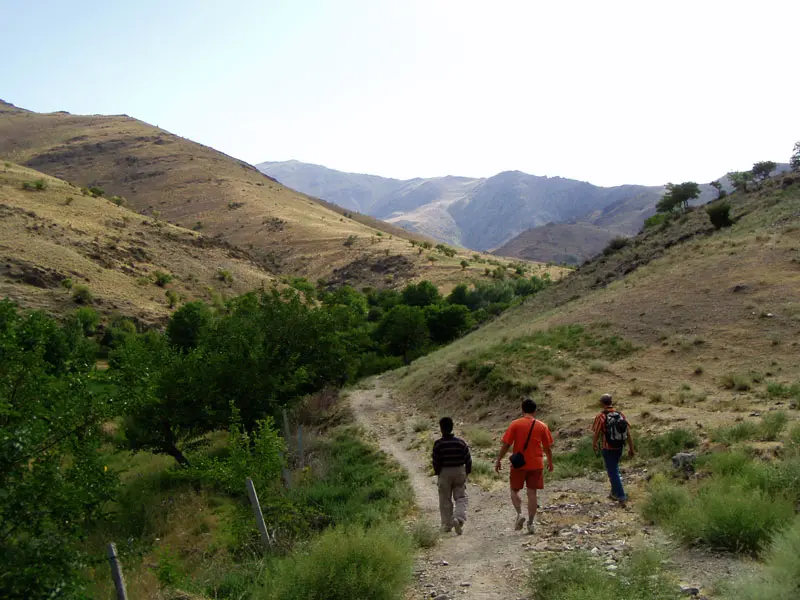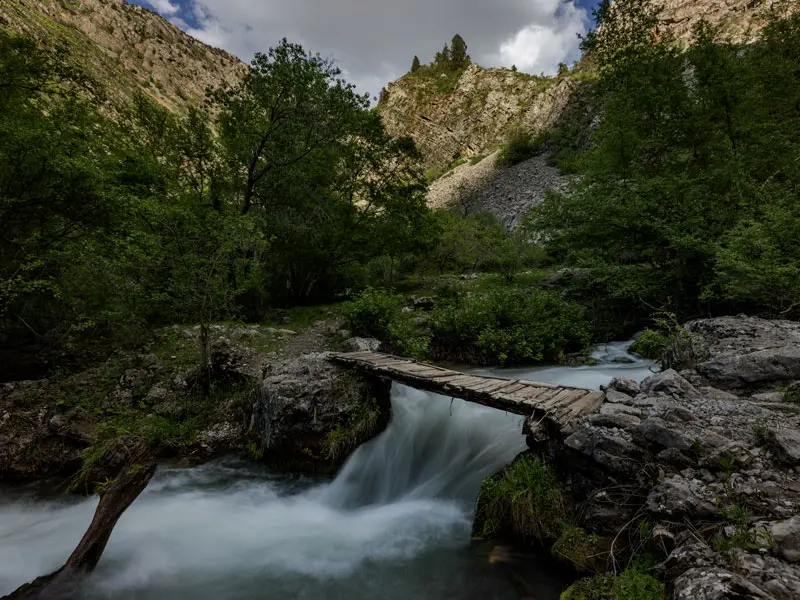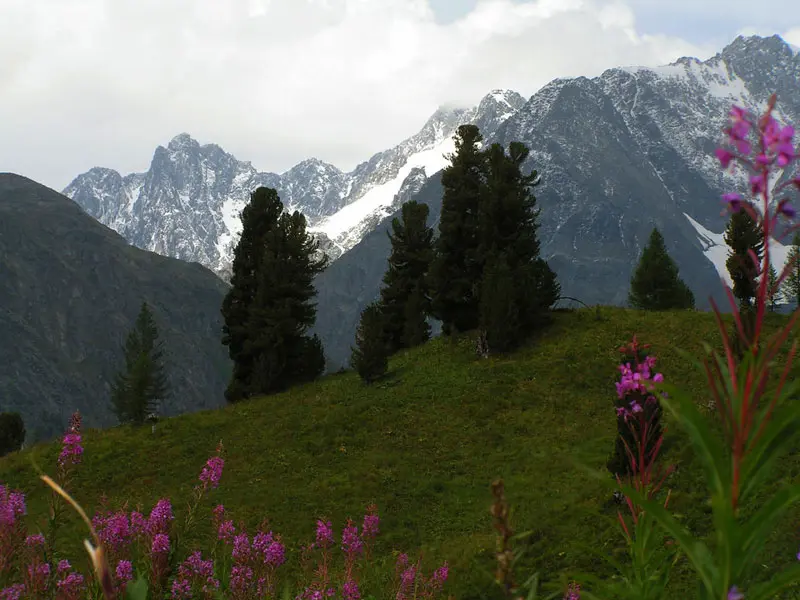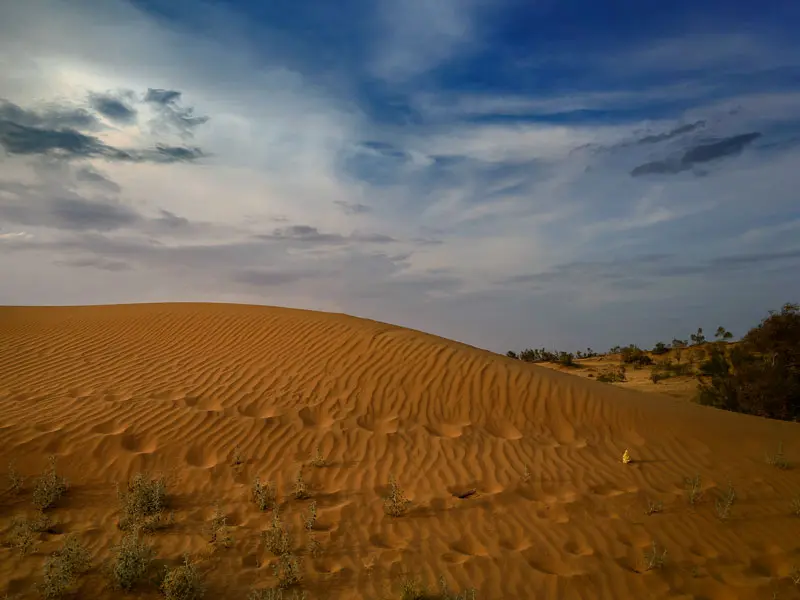Uzbekistan is a country in Central Asia with an unusually beautiful and diverse nature, which has spread out mountains, steppes and deserts on its vast expanses. It was for this purpose that the government of the country during different periods created reserves and national parks, whose main goal was the preservation and respect for natural resources. Due to the amazing contrast of natural zones, reserves of Uzbekistan are notable for the striking diversity of flora and fauna. Under the auspices of the reserves are such endangered species as lynx, snow leopard, stone marten, screw-horned goat, Bukhara deer Hangul and many others. Today in Uzbekistan there are over 10 reserves and protected areas, the most notable of which we describe below.
Nature Reserves in Uzbekistan: Nurata

Nurata Reserve was established in 1976 and, as the name suggests, is located in the central part of the Nuratau ridge. The reserve is located at an altitude of 500-2100 m above sea level and has an area of about 18,000 hectares. In the reserve grow walnut-fruit, juniper and mountain forest ecosystems. The Nurata Reserve is the only habitat for the population of Severtsev ram, which is listed in the Red Book of Uzbekistan. The Nuratau Mountains attract historians and travellers, as there are traces of ancient civilizations, sedentary peoples and nomadic tribes. In particular, the region is rich in rock paintings depicting hunting for mountain sheep and the remnants of ancient settlements.
Nurata Reserve is currently becoming one of the most popular destinations in the field of ecotourism in Uzbekistan. Horse, water and hiking trips and other types of active and passive activities, such as bird watching, living in tent camps, visiting mountains, fishing, water tourism, botanical excursions, archaeological tourism, observation of various insect species attract lovers of recreation in the midst of nature.
Nature Reserves in Uzbekistan: Chatkal State Reserve

Chatkal State Reserve is considered one of the oldest in the country - it was organized in 1947. The reserve is located in the Western Tien Shan, Tashkent region, on the slopes of the Chatkal mountain ridge. The area of the reserve is about 35 thousand hectares. The nature of the Chatkal Reserve is extremely picturesque. It is distinguished by hard-to-reach areas with steep cliffs, beautiful mountain peaks over 4,600 meters above sea level, deep gorges with crystal clear rivers and lakes. By itself, the Western Tien-Shan mountain range has been included in the UNESCO World Heritage List in 2016. Indeed, the uniqueness of the nature of this region deserves high protection, since it is home to many endemic species of animals and plants.
Nature Reserves in Uzbekistan: Gissar National Reserve

The Gissar National Reserve officially has its history since 1994 as a result of the union of the Kyzylsuisky and Mirakinsky nature reserves. The territory of the Gissar Reserve is about 81 thousand hectares. The landscape of the reserve is typically mountainous - there are countless gorges, karst caves, mountain streams, rivers and waterfalls. The main purpose of the creation of the reserve was the preservation of mountain ecosystems and the chief inhabitant of this region - the snow leopard. The flora of the reserve is also rich, there grow hardwoods, including Turkestan maple, barberry, dog rose and juniper.
Gissar reserve is of great interest for lovers of mountain tourism. The rocky terrain gives a lot of space to climbers and just fans of hiking. Within the reserve are preserved a couple of archaeological sites - a rock with fossilized dinosaur footprints, the cave of Tamerlane, the grand canyon of Kalasay, and several colourful mountain villages where you can stay overnight and get acquainted with the traditional way of life of the locals.
Nature Reserves in Uzbekistan: Kyzylkum Nature Reserve

The Kyzylkum Reserve was established in 1971 for the protection and enhancement of livestock of Bukhara deer - the aborigines of these lands, as well as to preserve the tugai-sandy ecosystem with its biodiversity. Thanks to the activities of the reserve in the fight against poachers, recently there is a tendency of a gradual increase in the number of deer, which number is about 200 heads now. Most of the reserve extends along the Amu Darya River. The territory of the reserve is characterized as desert-sandy with forest vegetation zones - more than 50% is occupied by floodplain forests and meadows, and the remaining 50% is desert.
Choose the Tour to Central Asia you like most and we will organize your amazing holidays in 5 stans.













